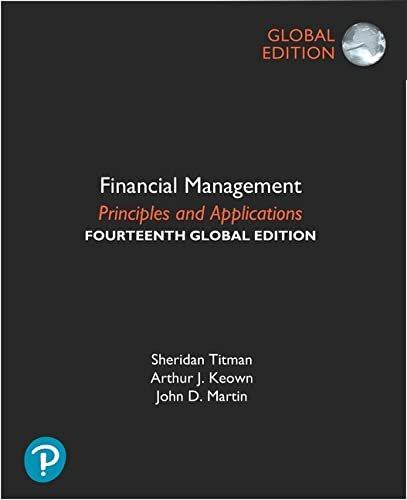Question
Your research has determined the following information about the common stock of two particular firms. Stock A Stock B Expected Return: 10% 15% Standard Deviation
Your research has determined the following information about the common stock of two particular firms. Stock A Stock B Expected Return: 10% 15% Standard Deviation 5% 9%
Part 1:
1. Explain what is meant by the stocks Expected Return
2. Calculate each stocks coefficient of variation.
Under what situation is the coefficient of variation useful? Briefly explain.
4. Which stock is riskier?
5. What do you base your answer on?
6. What type of risk are we considering here?
7. Is there anything that can be done to reduce this type of risk? If so, what?
8. When is this type of risk most relevant?
Part 2: You did some additional research, and also found the following values for each stocks beta coefficient: Stock A Stock B Beta Coefficient 0.7 1.4 Other current information is as follows: --Current Risk-free Rate: 5% --Current Market Rate: 12%
1. What type of risk are we now considering?
2. What is the current Market Risk Premium?
3. What is the required return for each stock suggested by CAPM?
4. Will diversification reduce the type of risk identified in #1 above?
5. Is there anything that can help to reduce this type of risk in a portfolio of stocks? If so, what.
6. Suppose that you invest $1,000 in Stock A, $1,500 in Stock B, and $2,500 in Stock C that has a beta of 2.0. Find your portfolios beta and required rate of return.
Step by Step Solution
There are 3 Steps involved in it
Step: 1

Get Instant Access to Expert-Tailored Solutions
See step-by-step solutions with expert insights and AI powered tools for academic success
Step: 2

Step: 3

Ace Your Homework with AI
Get the answers you need in no time with our AI-driven, step-by-step assistance
Get Started


